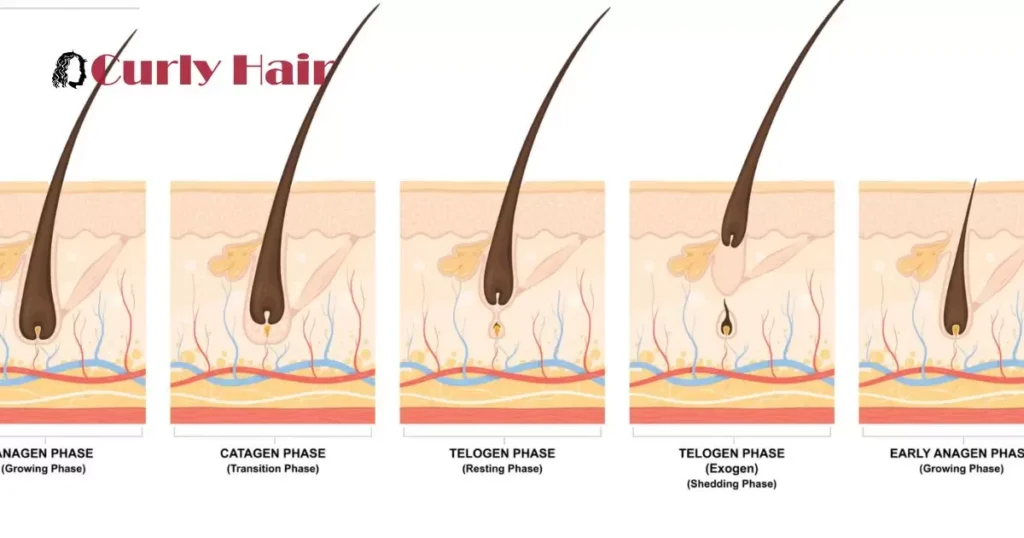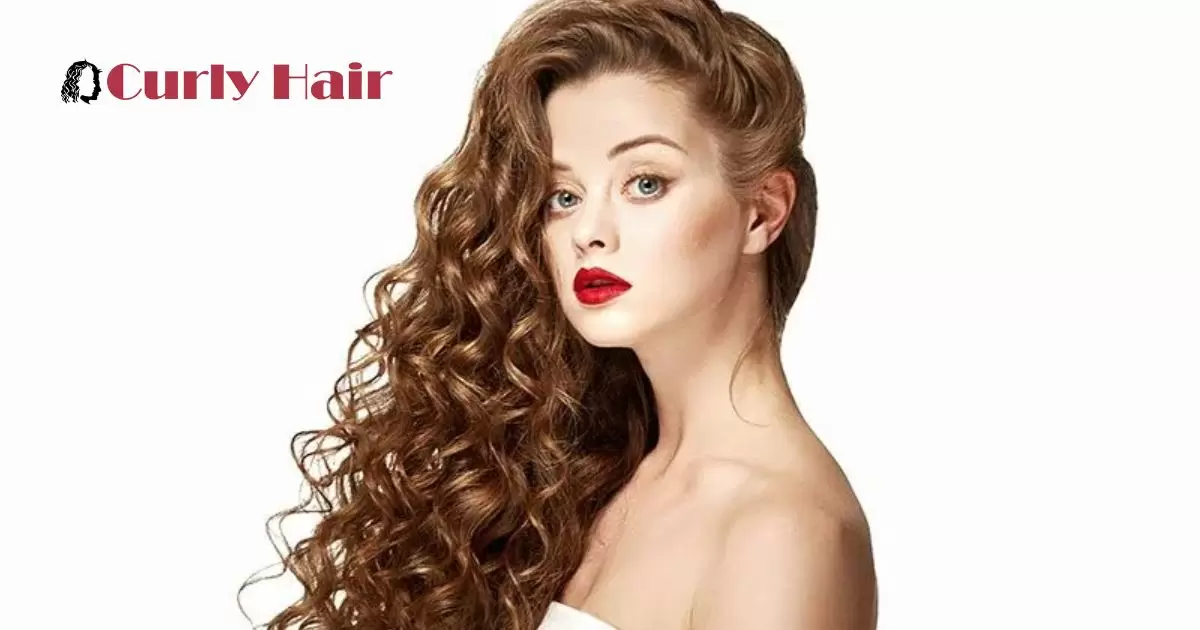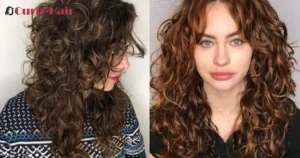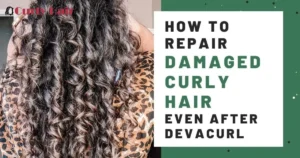Curly hair grows at the same average rate as straight hair, about half an inch per month. However, shrinkage can make growth seem slower. The curl pattern causes hair strands to coil up rather than hang straight as they grow.
Curly hair’s shrinkage can make growth appear sluggish. But follicles grow at the same rate, about half an inch per month. If you’re impatient for your coils to lengthen, you may wonder, does curly hair grow slower? Learn why shrinkage impacts visible growth and how moisture and stretch routines can enhance your curl pattern for faster visible results!
The curl pattern doesn’t affect growth rate, shrinkage can disguise progress. Get tips to maximize moisture and stretch curls for visible gains. Learn how regular trims keep ends healthy. Discover the best routines to enhance curl definition and length.
Key Takeaways
- Curly hair’s coiled nature may make growth seem slower.
- Growth rates vary, influenced by genetics and unique curl patterns.
- Prioritize gentle care, suitable products, and regular trims to prevent breakage.
- Accept and appreciate your natural curl pattern for realistic growth expectations.
The Science Of Hair Growth Cycles
Understanding how hair grows involves delving into the science of hair growth cycles. Hair doesn’t grow indefinitely, instead, it undergoes distinct phases. The first is the anagen phase, the active growth period where your hair is continually lengthening.
This is followed by the catagen phase, a transitional stage when growth slows down, and finally, the telogen phase, a resting period before the hair sheds and the cycle starts anew. Each hair follicle operates independently, contributing to the overall perception of hair growth speed.
Debunking The Misconception
| Misconception | Clarification |
| Slow Growth | Curly hair grows at a similar rate to straight hair. |
| Natural Look | Coiled structure may create an illusion of slowness. |
| Genetics Role | The coiled structure may create an illusion of slowness. |
| Breakage Issue | Prioritize gentle care to combat breakage for growth. |
| Realistic Expectations | Growth is influenced by genetics and unique curl types. |
Many think curly hair Cantu Moisturizing Curl Activator Cream grows slower, but it’s a myth. Hair growth is genetic, not related to curliness. Straight or curly, your hair’s pace is predetermined by your DNA.
The curly hair grows out at the same rate as straight hair. The misconception might arise as curls seem shorter due to their coiled structure. Debunking this myth highlights the need to understand the science behind hair growth, dismissing common misconceptions about different hair types.
Time Frame For Hair Growth And Contributing Factors

Understanding the time frame for hair growth is crucial. Typically, hair grows around half an inch (1.25 cm) per month. However, curly hair might seem to grow slower due to its coiled structure, making the length less apparent in the same timeframe.
Various factors influence hair growth. Genetics plays a key role, some people naturally experience faster growth than others. Additionally, overall health, diet, and hair care practices contribute significantly. By maintaining a healthy lifestyle and adopting proper hair care habits, individuals can support optimal hair growth, even for those with curly locks.
Role Of Genetics, Hair Care Practices, And Overall Health
Genetics plays a pivotal role in determining hair growth speed. If your family has a history of slow hair growth, chances are your curls might follow suit. It’s not just about genes, daily hair care practices also influence growth.
Gentle detangling, avoiding excessive heat, and regular trims contribute to healthier, potentially faster-growing curly hair. Overall health matters, a balanced diet rich in vitamins and minerals fuels not only your body but also your curls, promoting optimal growth. So, nurture your curls with care and nourishment to unlock their growth potential.
When To Diffuse Curly Hair?
Curly hair can be a delightful crown, but taming those locks requires a strategic approach. When it comes to diffusing curly hair, timing is key. Optimal results emerge when you diffuse freshly washed and conditioned curls.
Ideally, diffuse your curls when they are at their damp peak, post-shower. This minimizes frizz and defines your natural curl pattern. Morning diffusing also allows ample time for your curls to set during the day, ensuring a head-turning, bouncy outcome. Timing your diffusing routine aligns with the rhythmic growth patterns of curly hair, maximizing both style and health.
How To Combat Dryness And Keep Curly Hair Healthy?

Curly hair tends to be more prone to dryness due to its unique structure. The natural oils produced by the scalp have a harder time reaching the ends, making moisturizing crucial for overall health.
To combat dryness, opt for sulfate-free shampoos that won’t strip away essential oils. Follow up with a nourishing conditioner, evenly distributing it through your curls. Regular trims help prevent split ends, maintaining the health and appearance of your curly locks. Staying hydrated, both inside and out, is key, drink water and use leave-in conditioners for that extra moisture boost. By adopting these practices, you can keep your curly hair healthy and vibrant.
Why You Haven’t Met Your Hair Growth Goals?
Maybe you’re frustrated because your curly hair isn’t reaching the length you desire. Consistent growth might be elusive due to factors like breakage, split ends, or inadequate care. Curly hair tends to be more prone to breakage, and if not handled gently, it can hinder growth. Ensure you’re using the right products and techniques for your curl type.
Frequent Washes
Washing your hair too often might be stalling your growth goals. Daily washes can strip natural oils, leaving your hair dry and prone to breakage. Opt for a balanced washing routine to maintain the health and growth of your curly locks.
Harsh Shampoo
Using harsh shampoos might be hindering your hair growth goals. Stripping your hair of natural oils can lead to breakage, affecting overall length. Opt for milder, sulfate-free options to nurture your curls and promote healthier growth.
Over-Manipulation
Excessive handling of your curls may be sabotaging your growth ambitions. Over-manipulation, like constant styling or tight hairstyles, can lead to breakage and stunted growth. Opt for gentler practices to let your hair thrive and inch closer to those desired growth goals.
Heat Styling
Frequent heat styling might be slowing your curly hair growth. High temperatures can lead to damage and breakage, hindering your progress. Consider embracing natural styles to give your hair the break it needs and promote healthier growth.
Factors Influencing Hair Growth

Nutrition Matters: Your diet directly impacts hair growth. Ensure you’re getting enough vitamins and minerals, especially biotin, iron, and zinc, to support healthy hair.
Stress and Sleep: High-stress levels can disrupt the hair growth cycle. Prioritize quality sleep, as it is crucial for your body’s overall repair and rejuvenation, including hair growth.
Handling and Care: Treat your curly hair gently to prevent breakage. Regular trims, suitable products, and protective styles can contribute to maintaining healthy and growing curls.
Genetic Factors: Understand that genetics play a role in your hair growth journey. While you can influence certain factors, your genetic makeup sets the baseline for your hair’s growth potential.
Hormonal Balance: Fluctuations in hormones, especially during puberty, pregnancy, and menopause, can impact hair growth. Maintain hormonal balance through a healthy lifestyle and, if necessary, consult with a healthcare professional.
Environmental Factors: Pollution and harsh weather conditions can affect hair health. Shield your curls when necessary and consider protective measures to combat environmental stressors.
Curly Hair Characteristics
Curly hair has distinct characteristics that affect its growth. The unique curl pattern can make it more prone to tangling, leading to breakage if not handled gently. Natural oils from the scalp have a harder time traveling down the twists and turns of curly strands, which can result in drier hair prone to damage.
Understanding these traits is crucial for effective care. Using hydrating products, detangling with care, and opting for protective hairstyles can help manage and enhance the natural beauty of curly hair-growing tips. Recognizing and working with the inherent characteristics of curly hair sets the foundation for a healthy growth journey.
Average Hair Growth Rate

Curly hair, on average, grows about half an inch per month, which is the same as straight hair. The coiled structure can make it appear as if the hair is growing slower.
Genetics play a crucial role in determining individual growth rates, so embracing your unique curl pattern is key to setting realistic expectations for your hair growth journey. Consistent care and a gentle approach will help you make the most of your hair’s natural growth potential.
Frequently Asked Question
Why is it hard for curly hair to grow?
Curly hair faces challenges in growth due to its prone nature to breakage and split ends. The coiled structure may create an illusion of slower growth, but adopting proper care techniques can optimize its natural growth potential.
Which hair type takes the longest to grow?
Coily hair types often take the longest to visibly grow due to the natural spiral structure, which can make the length less apparent compared to straight hair.
Does curly hair stop growing at a certain length?
No, curly hair doesn’t inherently stop growing at a specific length. Like all hair types, growth continues, but factors such as breakage and split ends may give the appearance of a growth plateau.
Conclusion
To sum up, the query does curly hair grow slower, often stems from common misconceptions. While curly hair grows at a similar rate to straight hair, its coiled structure can create the illusion of slower growth. Understanding this, coupled with acknowledging the impact of breakage and split ends, is crucial for those aspiring to meet their hair growth goals.
To overcome these challenges, adopting a gentle care routine, suitable products, and embracing one’s unique curl pattern can make a significant difference. Regular trims, seemingly counterintuitive, prevent split ends and contribute to overall hair health.











